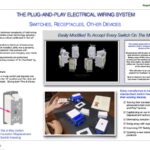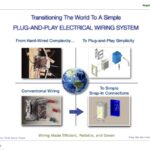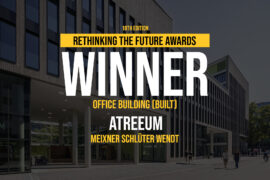This groundbreaking innovation reimagines electrical infrastructure for the 21st century, transforming the traditionally complex and labor-intensive wiring process into a universal plug-and-play methodology that dramatically improves installation efficiency, safety, and accessibility while catalyzing smart technology adoption worldwide.
Rethinking The Future Awards 2025
First Award | Technological Innovation of the Year (Built)
Project Name: REVOLUTIONARY PLUG-AND-PLAY ELECTRICAL WIRING SYSTEM
Category: Technological Innovation of the Year (Built)
Studio Name: Meyer3D – Architectural Design, Engineering, & Construction
Design Team: Mark Meyer
Area: Global – USA
Year: 2025
Location: Global – USA
Render Credits: N/A
Other Credits: N/A
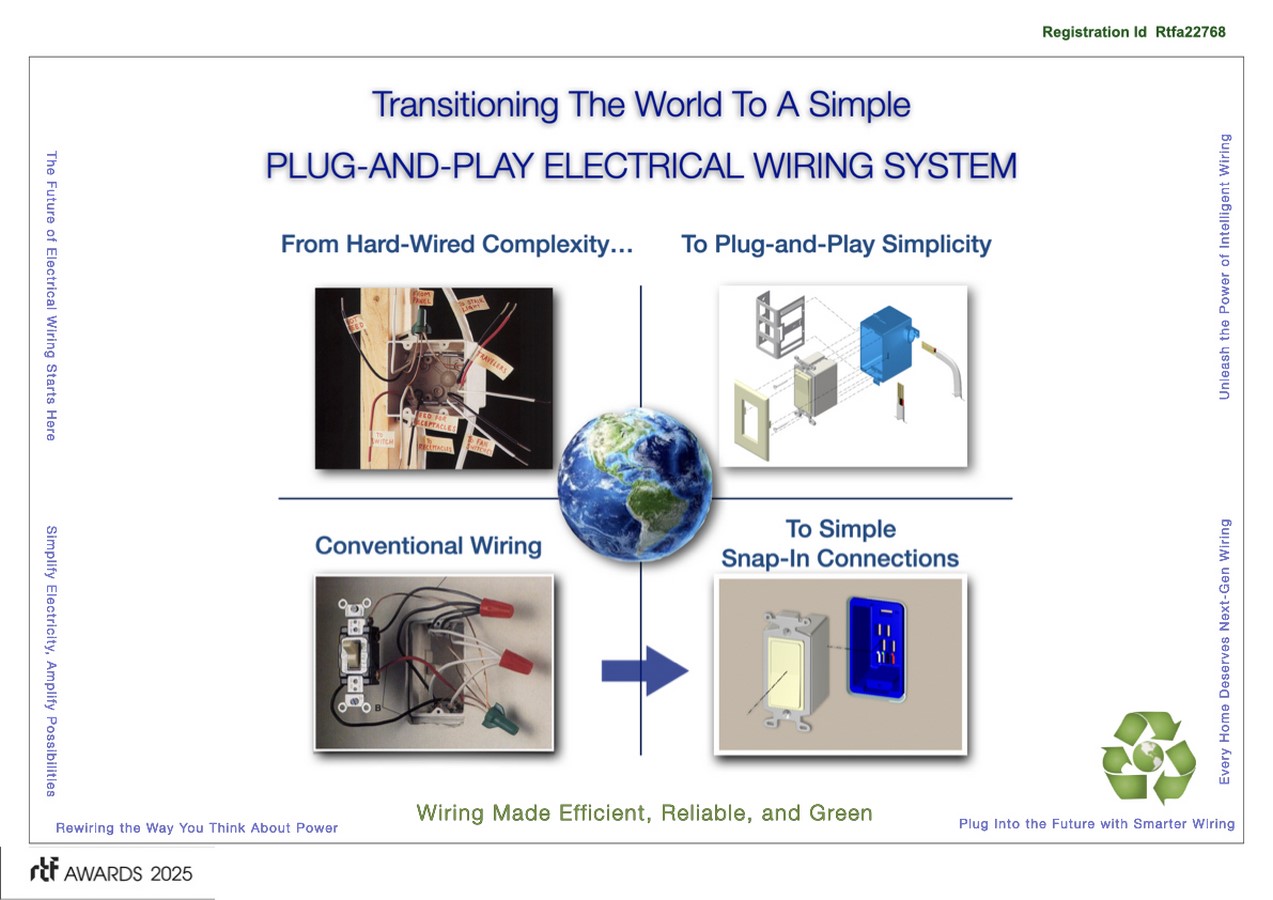
At the core of this system is the “Docking Station” – an evolution of standard in-wall mounting boxes featuring color-coded slots that accept conventional wiring. The installer just matches the color of the standard wires to the color of the slot. Wires from the circuit breaker panel slide in horizontally and the controlled power to the lights, fans etc. slide in vertically. Unlike traditional junction boxes, these boxes convert inserted wires into bus bars, creating direct connection points without requiring additional internal components.
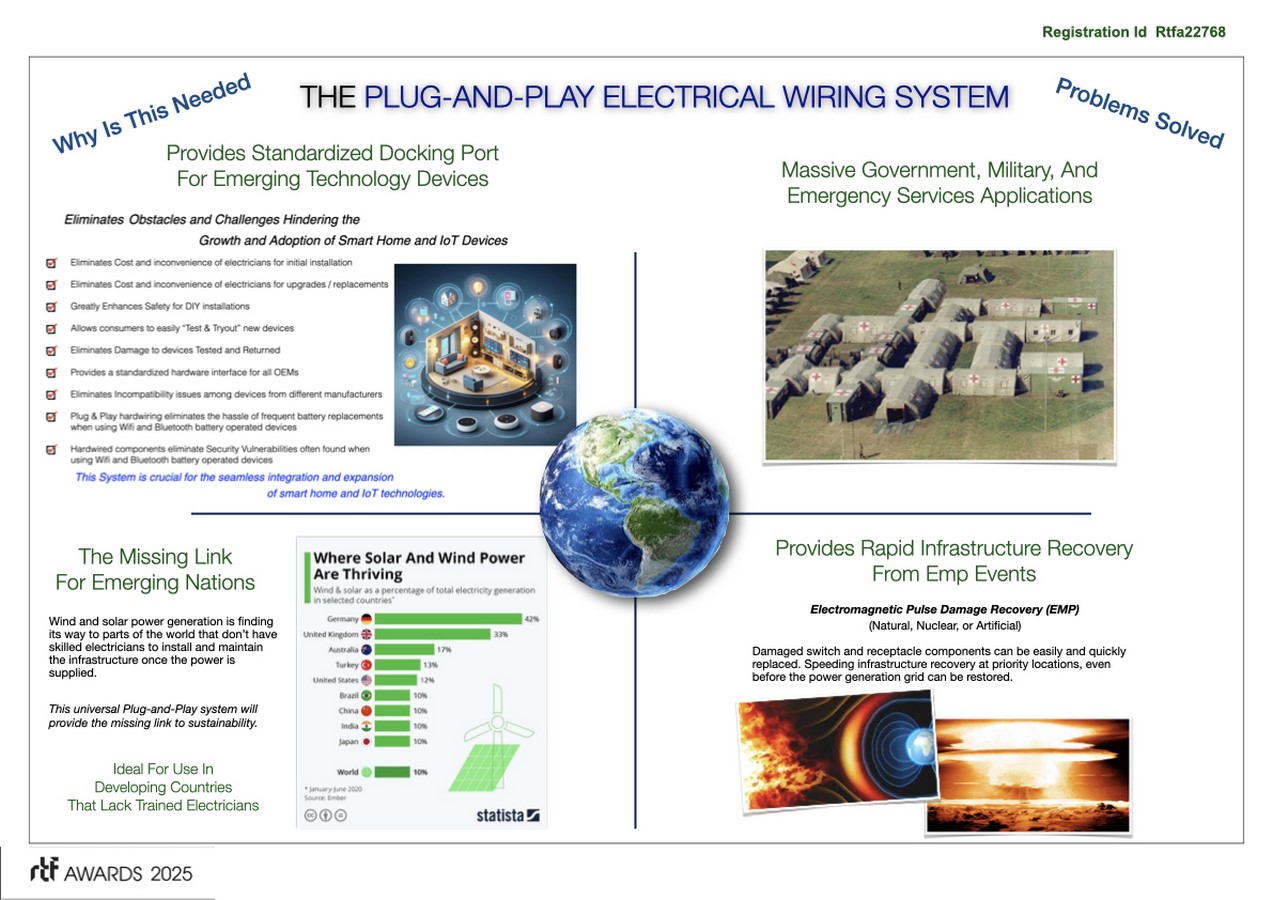
The true innovation emerges when devices – from standard switches to advanced smart controls – simply “plug in” using insulation displacement technology, eliminating exposed conductors and complex wiring procedures. The system’s impact on construction efficiency is transformative, reducing electrical rough-in time by 60% and final trim-out by 90%. For existing structures, retrofit-compatible docking stations seamlessly integrate with standard boxes, extending these benefits to billions of existing installations worldwide. Most critically, the universal design ensures 99% compatibility with global electrical standards, creating unprecedented standardization opportunities across international markets.
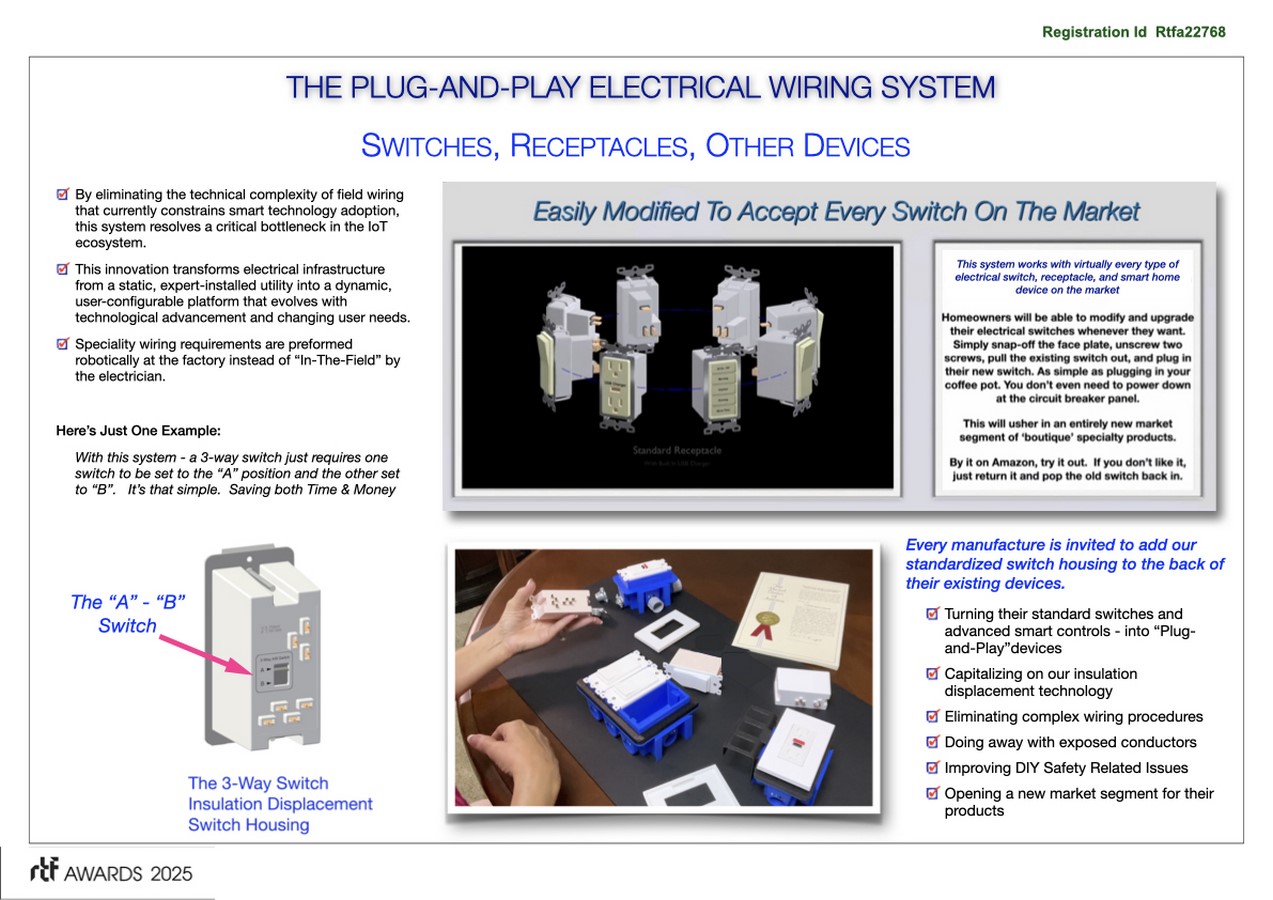
Beyond efficiency gains, this system democratizes electrical modification. Homeowners can safely exchange devices without professional assistance – even with power active – as the connection process is as straightforward and secure as plugging in a household appliance. This fundamentally shifts the paradigm from permanent, specialized installations to modular, user-configurable electrical systems.
The historical parallel to PEX plumbing is instructive. When introduced in the 1980s, PEX rapidly captured 75% of new plumbing installations by offering superior ease, speed, and cost-effectiveness. This electrical innovation is positioned for similar market penetration by addressing comparable pain points while opening entirely new possibilities for personalization and technological advancement.
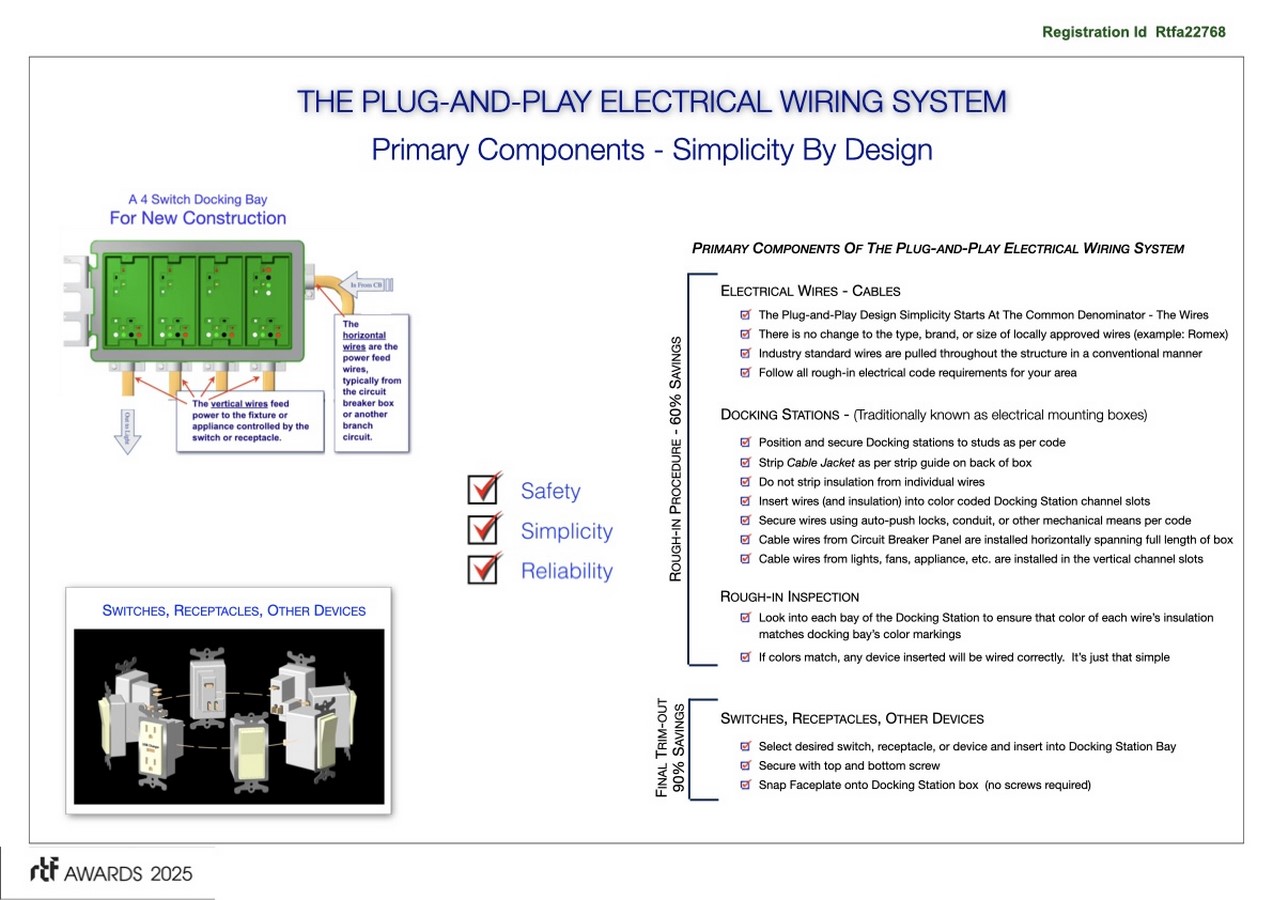
The system creates a virtuous cycle of benefits across the construction ecosystem: builders realize substantial cost and time savings; electricians gain expanded retrofit market opportunities; device manufacturers access standardized platforms for innovation; and end-users gain unprecedented ability to customize environments without specialized knowledge.
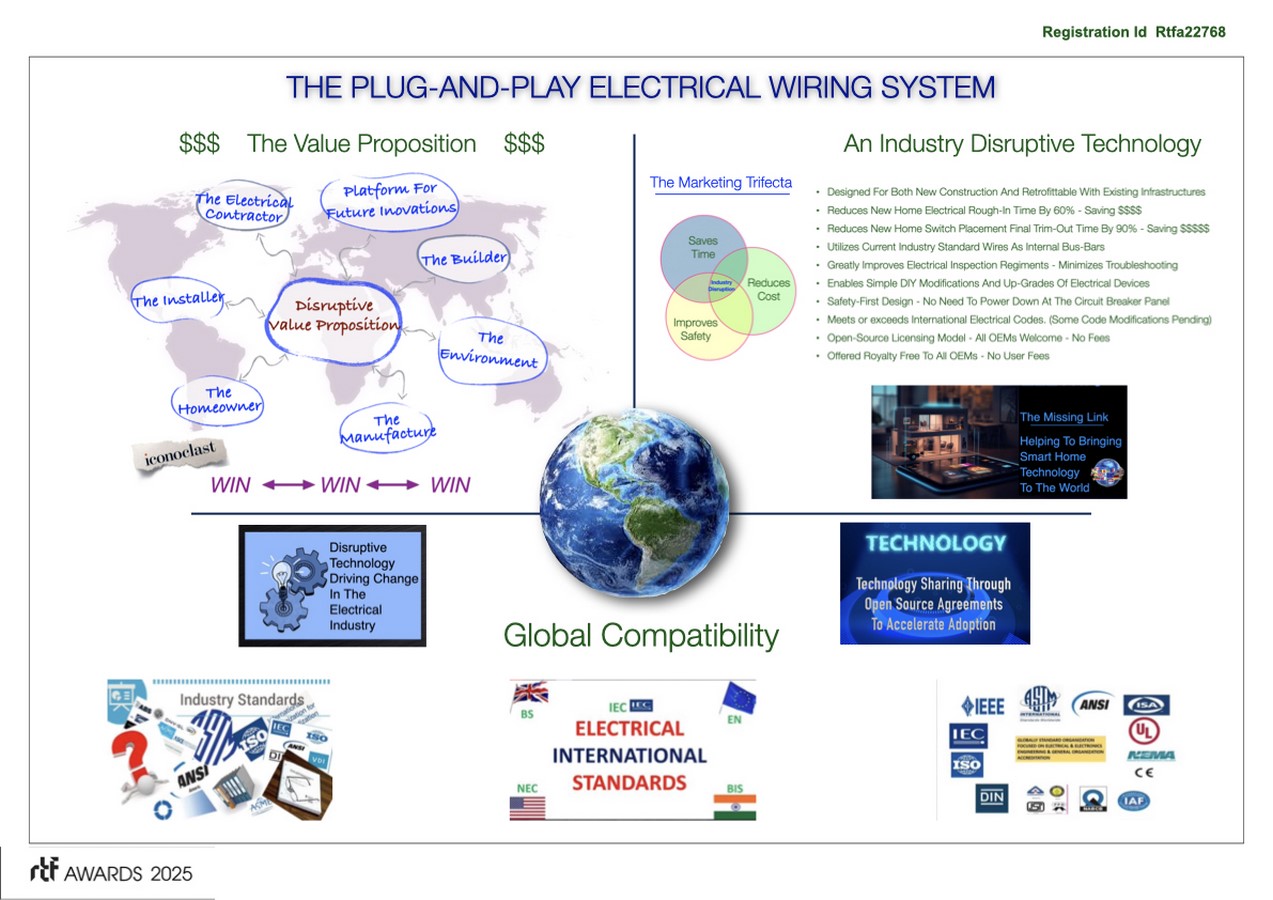
The implications extend beyond residential and commercial applications to sustainable development, military deployments, and emerging market electrification, where simplified installation dramatically reduces infrastructure barriers.
By eliminating the technical complexity that currently constrains smart technology adoption, this system resolves a critical bottleneck in the IoT ecosystem. This innovation transforms electrical infrastructure from a static, expert-installed utility into a dynamic, user-configurable platform that evolves with technological advancement and changing user needs.
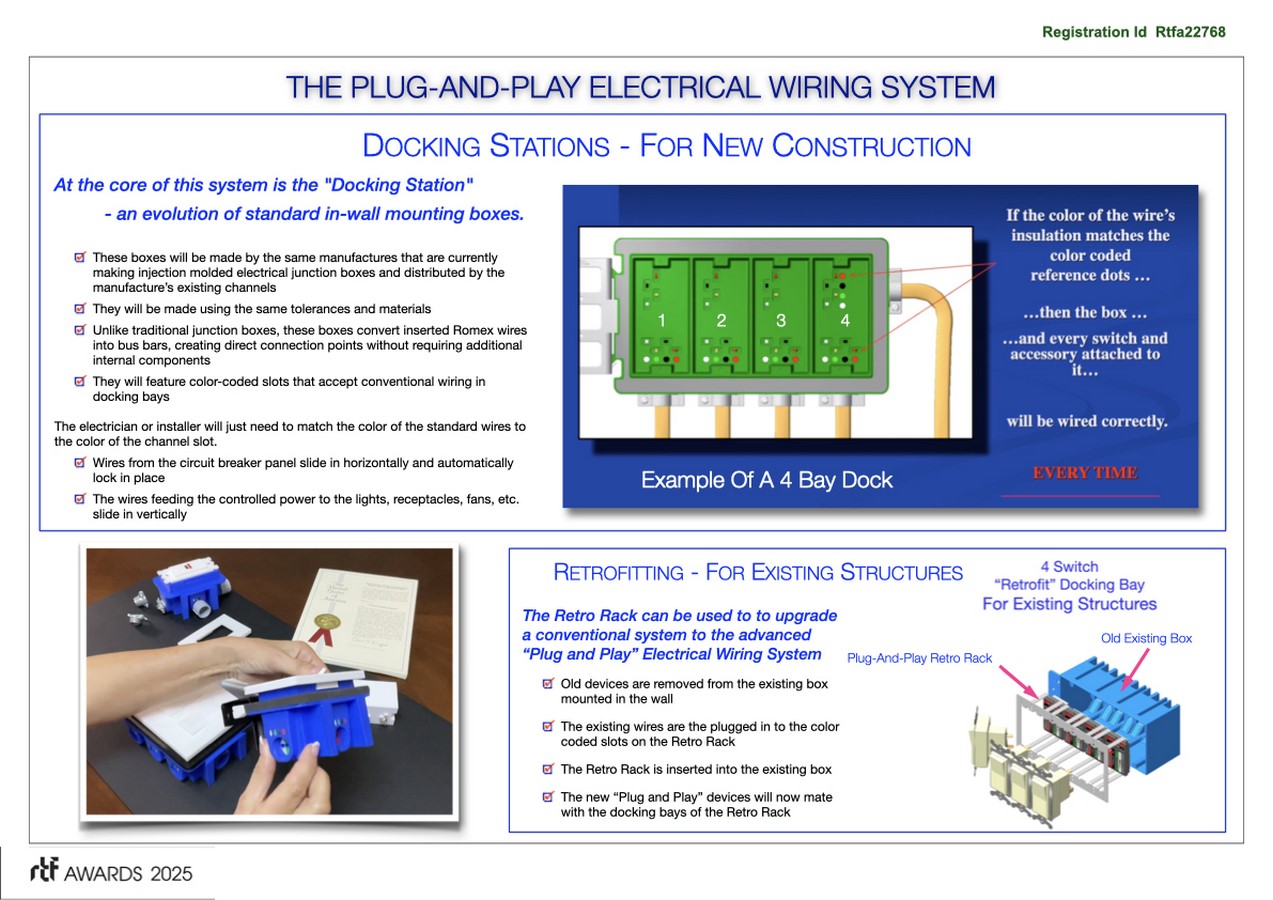
This represents not merely an incremental improvement but a paradigm shift in how we conceptualize, install, and interact with electrical systems – creating a universal language of connectivity that will power the next generation of built environments. Material costs are close to net neutral, initial installation costs are dramatically reduced, and installation training requirements are negligible. The inventor of this patented wiring system plans to release it to all OEMs as an “Open Source” “no cost” technology.





